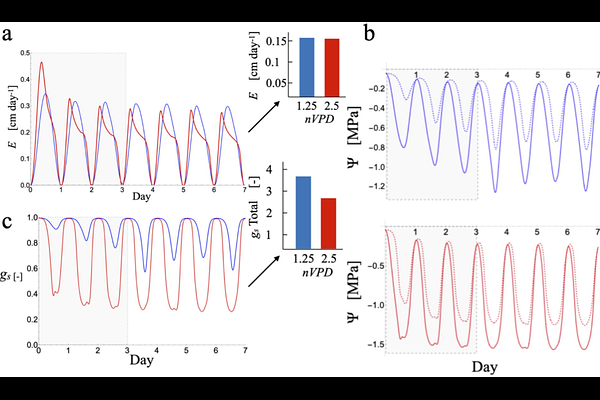Emergence of a maximum soil flux under drought governs stomatal responsiveness to vapor pressure deficit over sub-daily and daily timescales

Emergence of a maximum soil flux under drought governs stomatal responsiveness to vapor pressure deficit over sub-daily and daily timescales
Rockwell, F. E.
AbstractThe combination of drought and heat waves is known to have synergistic effects on mortality as plants experience both supply and demand-side water stress. Yet which of these most strongly down-regulates stomatal conductance remains at issue. Losses of soil hydraulic conductivity are modeled in a soil domain fed by a maximum water flux from a water table. Root uptake extracts water from the soil based on a two-node (root and leaf) plant model, with stomatal conductance a function of leaf water potential, and transpiration driven by vapor pressure deficit (VPD). The results of multi-day simulations reproduce published observations of near-perfect conservation of transpiration despite a doubling of VPD and show that the sensitivity of stomatal conductance to VPD depends on the ratio of total daily potential transpiration to the maximum soil flux. Osmotic adjustment to maintain open stomata to lower water potentials is shown to be ineffective for increasing carbon gain. Given estimates for the effective root to water table depth, use of a maximum soil water flux boundary condition could improve prediction of plant canopy responses to the twin stressors of drought and atmospheric aridity.